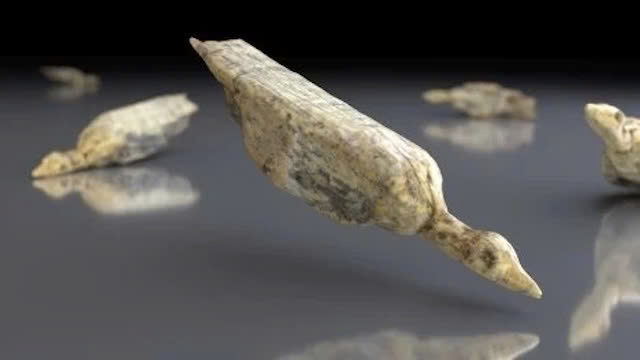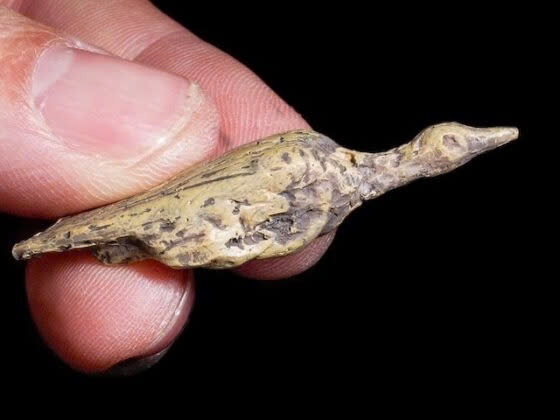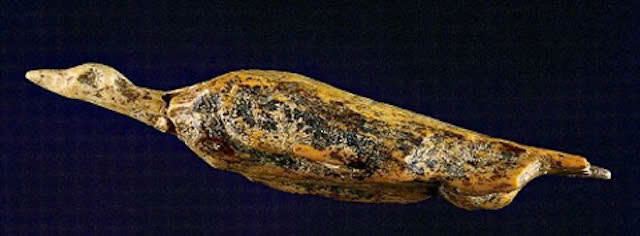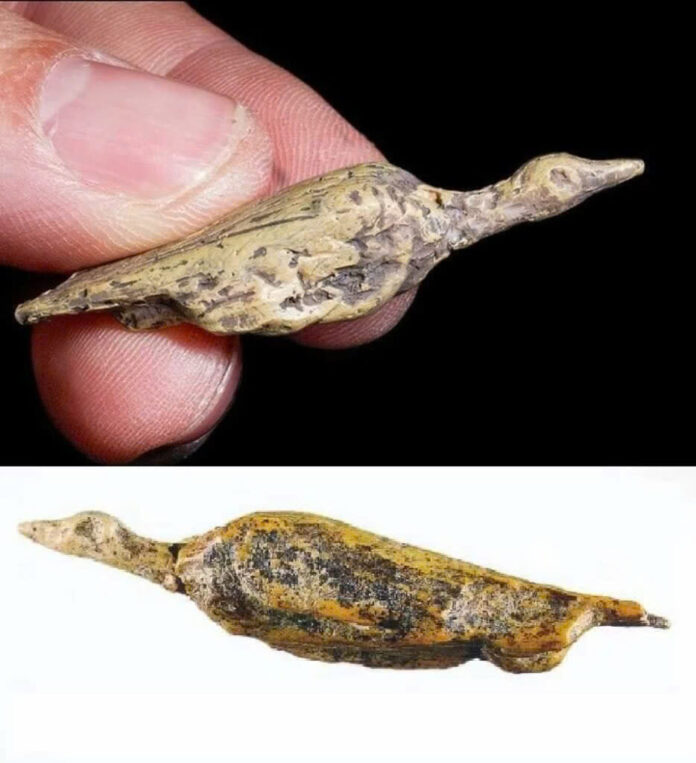In a remarkable discovery that challenges our understanding of prehistoric humans, archaeologists have uncovered exquisite mammoth ivory figurines dating back over 30,000 years. These ancient treasures, found in a German cave, are not just artifacts—they’re windows into the minds of our ancestors, revealing sophisticated artistic capabilities and complex spiritual beliefs that were previously thought beyond their reach.
The Remarkable Figurines of the Ice Age
Hidden away for millennia, these delicate carvings—some barely an inch in size—have survived to tell a fascinating story. Three key figurines stand out among the discoveries: a meticulously crafted water bird in mid-flight, an elegantly shaped horse’s head, and perhaps most intriguing, a lion-man hybrid that echoes a larger specimen found in a nearby valley.

“These aren’t crude attempts at representation,” explains Dr. Anthony Sinclair of the University of Liverpool. “They demonstrate an extraordinary level of skill and artistic vision that forces us to reconsider everything we thought we knew about early modern humans.”
The bird figurine deserves special attention. With its precisely carved head, eyes, and elongated neck suggesting movement, it may represent the earliest known artistic depiction of a bird in human history. Only a few other artifacts, such as an owl carving from a French cave, might rival its antiquity.
Spiritual Dimensions: Shamanism and Early Belief Systems
The symbolism embedded in these figurines offers tantalizing clues about the spiritual world of our ancestors. Many archaeologists, including lead researcher Nicholas Conard, suggest these artifacts support the theory that shamanic practices were prevalent in early human societies.
The Lion-Man: A Spiritual Mediator?

The lion-man figurine has generated particular interest among researchers. Similar to a nearly foot-long figure previously discovered nearby, it appears to blend human and animal characteristics—a common motif in shamanic traditions worldwide.
“In many ancient cultures, shamans were believed to transform into animals to journey between worlds,” explains a cultural anthropologist associated with the project. “The lion-man might represent such a transformation, embodying the power and spiritual authority of these early religious leaders.”
Birds and Spiritual Flight
The water bird figurine carries special significance in this context. Throughout human history, birds—particularly those associated with water—have symbolized spiritual journeys and the ability to traverse different realms of existence. The detailed craftsmanship of this particular carving suggests it held profound symbolic importance to its creators.
Beyond Spirituality: Alternative Interpretations

While the shamanic interpretation remains compelling, researchers acknowledge other possibilities for these figurines’ purpose:
- They may have served as talismans, carrying the desirable qualities of the animals they represented
- They could have functioned as teaching tools, helping to pass knowledge between generations
- Perhaps they were simply toys, created for the entertainment of children
- They might have represented a way for early humans to process and understand their relationship with the natural world
Harold Dibble from the University of Pennsylvania emphasizes this last point: “These figurines reflect humanity’s enduring fascination with the animal kingdom. They show us that even 30,000 years ago, our ancestors were deeply engaged with understanding and representing the world around them.”
Dating and Artistic Context
Radiocarbon analysis places these figurines between 28,000 and 35,000 years ago, with most experts settling on a narrower range of 32,000-34,000 years ago. This timeframe coincides with other monumental artistic achievements, such as the renowned cave paintings of France.
The German figurines belong to a larger collection of over 20 ivory carvings discovered in the region, collectively representing one of the world’s oldest bodies of figurative art. Their existence contradicts earlier assumptions about early human capabilities—while Neanderthals left little evidence of symbolic art, early modern humans clearly devoted significant time and resources to creating these meaningful objects.
Video
Redefining Human History Through Art
These tiny figurines carry enormous implications for our understanding of human development. Far from being merely decorative, they represent a pivotal moment in human consciousness—when our ancestors began using art not just to depict the world, but to interpret and make meaning from it.

“What we’re seeing here is the dawn of human creativity as we understand it today,” notes one researcher. “These aren’t just representations—they’re expressions of identity, spirituality, and culture.”
As research continues, each new discovery adds another piece to the puzzle of human origins. These mammoth ivory carvings remind us that art wasn’t a luxury that arrived with civilization—it was a fundamental aspect of human existence from our earliest beginnings, helping our ancestors understand their place in the world and perhaps even glimpse beyond it.
They challenge us to reconsider what it means to be human and to appreciate the remarkable artistic legacy that connects us across millennia to those ancient artists who, in their own way, were seeking to express the same fundamental human experiences we still grapple with today.

